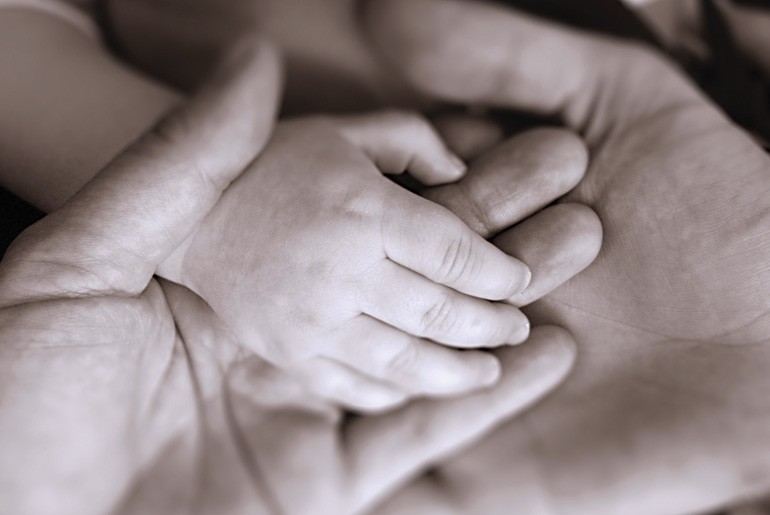By Dr. Pierre Schembri Wismayer
Public cord blood banking is recommendable. Local authorities should consider setting up a national bank once the use increases, making it more cost effective. Hopefully this can happen within a few years.
The removal and storage of cord blood is not harmful to mother or child and is something which could be considered by every parent. On the other hand, I would like to dispel the myths and hype surrounding the sale of private cord blood banking services to families. One publication stated that only one in 50,000 children would use privately banked cord blood. The main reason behind this low statistic is that cord blood is used to treat rare genetic and malignant (cancer) conditions. Moreover, not for the children themselves but usually for their siblings.
Cord blood may reasonably be banked by families who are much more likely to develop these genetic diseases, but such families are few. Similarly, this may be important for a couple where one or both partners have a non-European origin, such as sub-Saharan African, or far Eastern. For these couples it would be difficult to find a matching unit at the numerous European cord blood banks.
So what are the main medical uses of cord blood?
A blood stem cell transplant can cure several inherited diseases. They sum up around 35% of cord blood uses. Locally, thalassaemia would be the most common condition. When both parents are carriers for the condition (termed thalassaemia minor), there is a one in four chance that their children will have the disease (termed thalassaemia major). A stem cell (cord blood) transplantation from a healthy sibling to the sick child would have a good chance of curing the condition.
Cord blood is easier to match than other adult sources of stem cells. Usually there is about a 50–60% chance of matches between siblings. This percentage decreases drastically to almost 0% when matching parents and other family members.
The second most common treatment is for cancers. Leukaemia is by far the most common malignancy in children yet 70% are cured using chemotherapy. A transplant (of haematopoietic stem cells) is only needed after unsuccessful chemo, but the donor is almost always someone other than the patient. The patient’s own stem cells have already lost the battle against the cancer, so adding more of the same is of limited use. A potential cure is the cord blood of a healthy, preferably matched, sibling not the child’s own cord blood.
Transplants from a child’s own stem cells are useful in certain rare childhood tumours, such as neuroblastoma and Ewing’s sarcoma. First, the child would need to respond well to high dose chemotherapy, followed by replacing their bone marrow with the transplanted stem cells. Other procedures do exist if none of the child’s cord blood was banked.
Why am I only talking about childhood disease? What about Parkinson’s and Alzheimer’s Disease, heart disease, diabetes, and the other conditions companies mention? Three reasons. First the companies only promise to store cord blood for 25 years. For some extra money you can bank it for longer but no one has ever stored cord blood for such lengths. We don’t know if it would survive and still be useful — theoretically it might.
The second reason is that diseases like heart attacks, Alzheimer’s, diabetes and so on tend to affect us well beyond 25 years of age. Stem cells are only being researched as treatments. There are no cures. These diseases also need mesenchymal stem cells (derived from the cord not the cord blood), which can be banked at extra cost. Once again we do not know how long they can be banked.
The third reason is quantity. The amount of stem cells in a baby’s umbilical cord blood can at most restore the bone marrow of a 50 kg person. Banking is either for children or rather petite people. Lots of research is trying to increase these stem cells but none are close to being used.
Only Type I diabetes (which usually affects children) can be treated with cord blood stem cells. The form of diabetes most common in Malta is Type II diabetes that develops in adults not children. It cannot easily be treated with stem cells.
A child’s mesenchymal stem cells could possibly be used to suppress autoimmune disease. They might also treat children who are born with cerebral palsy or childhood strokes. Unfortunately, no in-depth studies have been performed to verify this possibility, but a few interesting cases do exist.
With future research this could change and more treatments could be developed. Don’t hold your breath though, research takes years or decades to reach patients.
But what about the future? Can further research make stem cells more useful? Here one would be completely right. But by then there might be another even more exciting solution.
Scientists have already managed to take any adult’s own cells and reprogramme them through a genetic cocktail so that they become stem cells. Japanese researchers have lead research into this new type of stem cell. These cells are quickly becoming just as good as any other stem cell.
Researchers in Japan are also spearheading a project that will see 90% of the Japanese population able to use stem cells from adult cells to treat genetic diseases. Being derived from your own cells, matching will become a problem of the past. But growing and processing such cells will become a clinical necessity. If Europe, including Malta, would spearhead a similar project our health department needs to start investing in cell biology facilities not only for IVF but for clinical cell biology in general — a bank to treat everyone.





Comments are closed for this article!